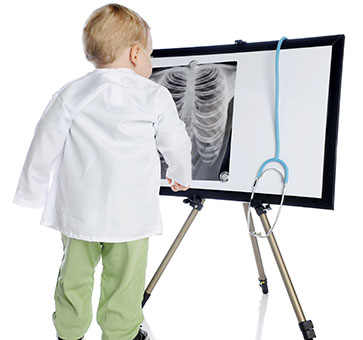What's Next, First Grade MCATs?

Thinkstock
Nearly 400 kindergarten students from towns around Lebanon, Oregon, participated earlier this year in the fourth annual mini-medical school, taught by real first-year med students from the College of Osteopathic Medicine of the Pacific Northwest (COMP-Northwest). “It’s about paying it forward,” said John Pham, DO, vice chair and assistant professor of family medicine at COMP-Northwest. “Maybe someday, years from now, one or two of these kids will want to become doctors in part because they remembered the mini-medical school.”
So how do you teach surgery to kindergarteners? It’s kind of ingenious, actually. The “patient” puts on an apron that has felt organs stuck to it. Then a mock anesthesia mask goes over the patient’s mouth and nose, and once she’s asleep the young surgeons-in-training simply pluck the organs off the apron while learning about what each of those organs does.
If only it were that easy...
